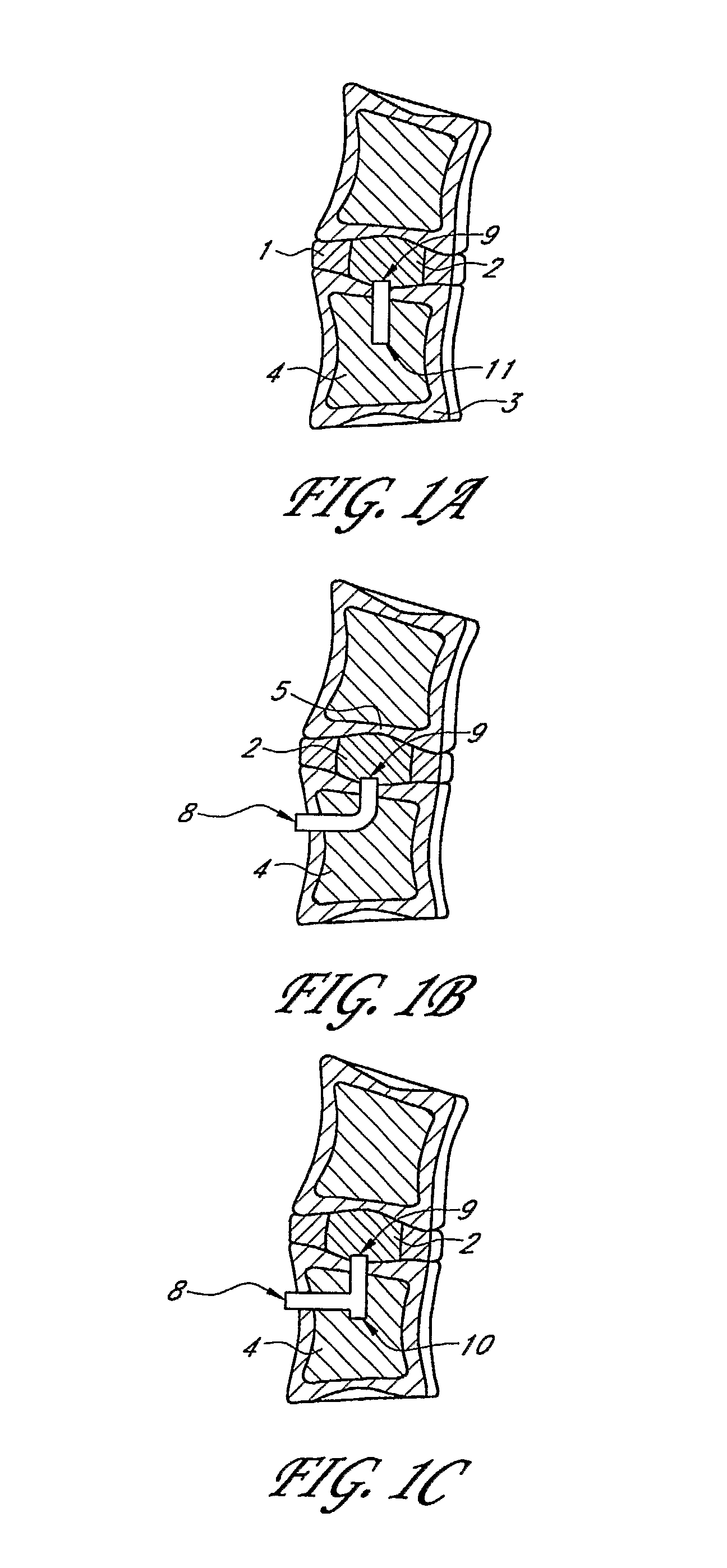System and method for restoration of nutrient flow to nucleus pulposa
a nucleus pulposa and nutrient flow technology, applied in the field of system and method for restoring nutrient flow to the nucleus pulposa, can solve the problems of significant discomfort, fractures and herniations, etc., and achieve the effects of restoring normal disc function, reducing the osmotic gradient into the disc, and reducing the water content in the nucleus pulposa
- Summary
- Abstract
- Description
- Claims
- Application Information
AI Technical Summary
Benefits of technology
Problems solved by technology
Method used
Image
Examples
Embodiment Construction
[0015]Referring to FIG. 1, three potential pathways for nutrient transfer to the nucleus pulposa 2 are illustrated: A first route from the cancellous bone material 4 which occupies the center of the vertebral body, to the nucleus pulposa 2, a second route from the tissues surrounding the vertebral body 8, via the vertebral body endplate 5 to the nucleus pulposa 2, and a third route from both regions simultaneously.
[0016]Referring to FIG. 2, a device is shown that is generally cylindrical in shape having a coarse threaded exterior 21, with periodic interruptions in the thread 22 which allow for stabilization of the device as post placement bony ingrowth occurs. The device will have a core 24 composed of some material such as porous sintered stainless steel, which facilitates the transfer of nutrients from its proximal end 26 to its distal end 25. Additionally, a multiplicity of transverse passages 23 from the exterior surface of the device, to its inner porous core are present to fac...
PUM
 Login to View More
Login to View More Abstract
Description
Claims
Application Information
 Login to View More
Login to View More - R&D
- Intellectual Property
- Life Sciences
- Materials
- Tech Scout
- Unparalleled Data Quality
- Higher Quality Content
- 60% Fewer Hallucinations
Browse by: Latest US Patents, China's latest patents, Technical Efficacy Thesaurus, Application Domain, Technology Topic, Popular Technical Reports.
© 2025 PatSnap. All rights reserved.Legal|Privacy policy|Modern Slavery Act Transparency Statement|Sitemap|About US| Contact US: help@patsnap.com



